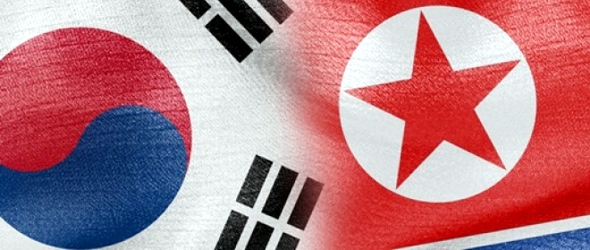 Adam Taylor / Business Insider ~ North and South Korea were separated at the end of World War II. They’ve walked quite different paths since then.
Adam Taylor / Business Insider ~ North and South Korea were separated at the end of World War II. They’ve walked quite different paths since then.
Under successive pro-American governments, the South has become an economic powerhouse, one of the G-20 major economies. South Korean companies like Samsung, Hyundai, and LG are renowned around the world.
The North, led by a family dynasty based on “Juche” philosophy of self-sufficiency, has turned into a bitterly poor and unpredictable nation.
The Guardian’s Data Blog has published some figures that show just how divergent the two nations are, economically and socially. Here are some of the crazier ones:
South Korea’s GDP (purchasing power parity) is $1,622 billion. North Korea’s is $40 billion.
South Korea’s GDP (real growth rate) is 2.7%. In the North it is 0.8%.
The GDP per capita is $32,400 in South Korea. In the North it is just $1,800.
South Korea exports total $552.6 billion, while the North’s are just $4.71 billion.
For every 1,000 live births in South Korea, 4.08 of the infants die on average. In the North, 26.21 die.
Life expectancy in the South is 79.3 years. In the North it is ten years less at 69.2.
81.5% of South Korea has access to the Internet. Less than 0.1% of North Koreans do.
The intentional homicide rate per 100,000 people is 2.6 in the South.
In North Korea it is 15.2.
One well-known statistic not featured by the Guardian — the BBC reports that North Koreans tend to be 1.2 – 3.1 inches shorter than their South Korean counterparts.
So, judging by this it looks a lot like the South trumps the North. Except in one key area:
The South has 655,000 actively serving in the military service. The North has 1.19 million.
Of course, data isn’t everything — one of the stranger factors in the North-South relationship is the surprising number of North Korean refugees who return to the North after living in the South for a while.
However, the wildly divergent figures certainly show what 50 years of economic policy will do.
It’s also likely to be a big factor if reunification ever becomes politically possible. When Germany was reunified, East Germany’s GDP per capita was 40% of that in the West. In North Korea, GDP per capita is barely 5% of that in the South.
See more data. along with sources and dates, over at the Guardian’s spreadsheet.





